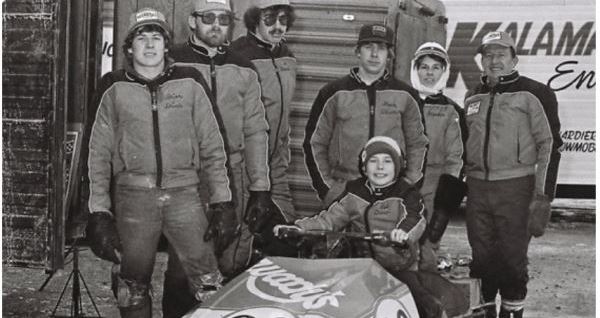We frequently get letters from snowmobilers telling us they are giving up the sport because they no longer feel safe on the trails.
What if an invention could make trails safer? What if those people that jumped ship returned because they felt safer on the trails? If Richard Lemke realizes his dream, that could happen — and we shouldn’t have to wait long.
The snowmobile industry is on the verge of a safety innovation that could change the sport dramatically. And Snow Goer got the exclusive, inside scoop: a chance to talk to Lemke, the man behind a patent-pending collision-avoidance system.
Though the idea occurred to him long before three years ago, it wasn’t until then that Lemke actually started the wheels in motion.
Like most snowmobilers Lemke has had close calls on the trails coming around blind corners, he said. But it was when his 8-year-old son, Miles, was sitting in front of him on his sled and they nearly collided with an oncoming snowmobile that he knew he had to act.
“At that moment I knew that someone needed to commit to this,” Lemke said. So he contacted Dale Ream, president of Harshaw Research Inc., and began making his brain child a reality: a Collision Avoidance System (CAS) — a potentially cheap and easy solution to “close calls” on the trail. When we talked with Lemke in late July, he had been waiting on patent approval for 18 months, as the patent offices were backed up, but he anticipated getting patent approval by November at the latest.
“I had a general idea of how it would work and [Harshaw] filled in all the blanks,” Lemke said.
How does it work? That’s the first question we asked.
Lemke’s innovative technology uses sensors to detect oncoming sleds similar to backyard motion-sensitive security lights. There are two types of sensors: a speed sensor that detects an object’s movement relative to your snowmobile; and a heat sensor that detects heat signatures like people, animals and engines.
Keep in mind, the patent-pending CAS has yet to be sold to manufacturers, therefore no prototypes have been built — which means no in-field performance testing has been done yet. For the same reason, Lemke could not predict with certainty when the system will hit the market.
CAS Project Engineer Caleob King estimated the system’s sensors have the potential to detect oncoming traffic from up to 100 feet away, perhaps more.
Time for two important clarifications: No, the system would not depend on other sleds being equipped with the system; and no, the system should not be triggered by sleds in your group traveling the same direction. By design, the speed sensor would only detect approaching objects.
The system would divide the area surrounding a snowmobile into various “danger zones,” according to King.
The options are still open regarding how a rider could be notified of danger, King said. The initial thought is audible, but a system could be visual or have indicators for both. The example outlined to us was that when danger, or movement, is detected in, say the far left zone, an audible signal would sound in the rider’s left ear. It could be wireless as well. The possibilities are numerous.
Though Lemke and Harshaw don’t have a prototype for the system yet and there are several unknowns, the patent-pending design engineering is rock solid, they said. “It is fairly well specified,” King said. “A manufacturer still has to put the wires together, but it’s very doable.”
Sounds great, doesn’t it? A way to have a feel for what’s around a blind corner is a technology every level of snowmobiler on any brand will benefit from. But how much does it cost? Very little, Ream said. “[The system] is not complicated or expensive,” he said. “We’ve streamlined the design so it makes good sense.”
Though they have yet to pitch the technology to manufacturers, Lemke and those who have helped bring his dream to fruition believe the product is a win-win for everyone.
“It’s a desirable unit, it’s easy to license, the cost is low, it’s user friendly and it’ll make snowmobiling safer,” Ream said. With letters to the editor coming in each month from snowmobilers who stay off the trails on weekends or are worried about the increasing safety risks with bigger, faster engines, this technology is not only exciting, many will think it’s necessary.
“If we save one life, I’ll be a happy camper,” Lemke said. Oh, and he said one more thing about the future of his Collision Avoidance System: “I get the first one.”
Well, then, we want to test the second one.



